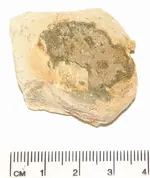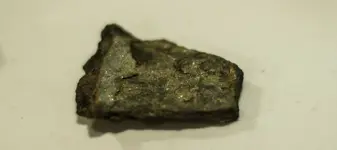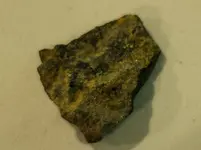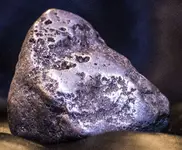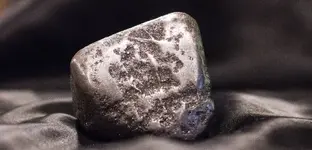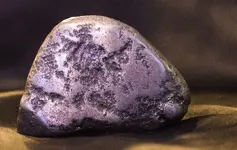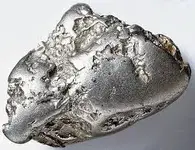There’s a lot of misinformation in this thread. If you go Googling for information, you will find lots of unqualified statements which reinforce some of the misinformation. Statements like “meteorites are rich in Iridium” without stating the amount. The truth is rather different.
If you can see significant amounts of native shiny metal in a meteorite it will always be iron alloyed with lower amounts of nickel and that will always be strongly magnetic. Any observation which differs from that means you don’t have a meteorite. Some meteorites are non-magnetic, or only weakly so, but those will not have observable amounts of shiny native metal.
Yes, meteorites are ‘rich’ in iridium, but only in a relative sense versus terrestrial material. The absolute amounts are tiny in both cases. Typically, you might find only up to 50 parts per trillion of iridium abundance in some of earth’s crustal rocks versus 500 parts per billion in a meteorite. That’s a huge difference, but still only a tiny amount.
The elements that make up our solar system (and other solar systems in the universe) were formed by supernova synthesis. The elements in the periodic table from carbon to iron are relatively abundant because they are readily formed by this process. Those with a higher atomic number than iron (atomic number 26) are much less abundant as the atomic number rises because these elements increasingly absorb stellar energy as they are formed. Iridium is atomic number 77 for example, which is why there isn’t a lot of it in the overall composition of our solar system.
Given the abundance of iron, the distribution of the other metallic elements is affected by the degree to which they are ‘siderophilic’. The term means ‘iron-loving’, so siderophile elements tend to become associated with iron and move with it during geologic processes when the iron is molten. That’s what happened on earth. As our molten blob of a planet formed its iron core, most of the iridium (a highly siderophilic metal) accompanied it, leaving the crust of the earth depleted of the little iridium that was initially present. The core will also likely have higher levels of the other siderophiles (ruthenium, rhodium, palladium, rhenium, osmium, iridium, platinum, and gold) than we typically find in surface rocks. Again the differences wil be large in orders of magnitude, but low in absolute amounts. Cobalt and nickel, are also moderately siderophilic.
Nickel iron meteorites are effectively the potential core material of failed planets. Their composition is broadly consistent with what we believe to be the composition of earth’s own core, so they are ‘rich’ in iridium in a relative sense but still low in absolute amounts. You’ll sometimes see it quoted that meteorites can also be ‘rich’ in platinum. It’s true, but only in a relative sense. A typical level would be around 10 parts per million, which is a lot higher than in a typical earth rock, but still nevertheless low.
The higher level of iridium in meteoritic material is one of the ways we can confirm meteoritic versus terrestrial origin, but it requires chemical analysis rather than visual checking. Meteorites don’t contain visible blobs of iridium. This difference has also created the ‘iridium anomaly’ of what we used to call the ‘K-T Boundary’ (now renamed as the ‘K-Pg Boundary’): an almost world-wide layer of iridium ‘rich’ material that represents the aftermath of a huge meteorite impact on the Yucatan Peninsula in Mexico around 66 million years ago that was at least partly responsible for the extinction of dinosaurs. According to location it variously shows up as a thick layer of carbonised plant material, compacted ash with tiny glass spherules, or a thin distinct dark sedimentary layer… all with iridium contents that are much higher than the surrounding rocks, but still only around 50 parts per billion. These are from my collection:
This is from Drumheller in Canada:
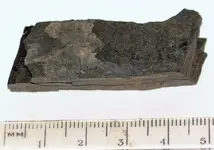
This from Tom Gato in Hawaii:
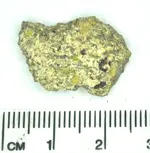
And this from Agost in Spain:
